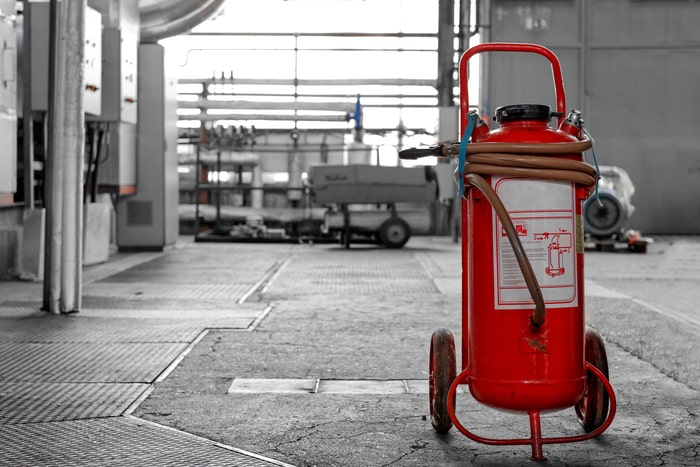
- May 7, 2024
- |security guard company
- | 0
Fire Prevention –
Effective fire prevention requires more than just the presence of fire watch services; it requires active engagement and collaboration with communities to promote awareness, preparedness, and proactive measures. Educational initiatives play a crucial role in training communities for fire prevention during watch services, empowering individuals and organizations to identify fire hazards, implement preventive measures, and respond effectively to emergencies. In this article, we explore the importance of educational initiatives in fire prevention during watch services and highlight strategies for training communities to enhance fire safety.
Understanding the Importance of Community Education
Community education is essential for fostering a culture of fire safety and resilience, as it empowers individuals and organizations to take ownership of their safety and well-being. By educating communities about fire prevention strategies, emergency preparedness measures, and the role of fire watch services, we can build a collective understanding of fire risks and develop collaborative solutions to mitigate them. Community education also promotes proactive engagement, enabling residents and businesses to identify and address fire hazards before they escalate into emergencies.
Components of Educational Initiatives
Effective educational initiatives for fire prevention during watch services encompass a range of components designed to impart knowledge, instill skills, and promote behavioral changes. Some key components include:
1. Fire Safety Workshops and Training: Conducting fire safety workshops and training sessions enables communities to learn about fire prevention techniques, emergency evacuation procedures, and the importance of early detection and reporting of fires. Workshops may cover topics such as fire extinguisher use, evacuation drills, smoke alarm maintenance, and household fire safety tips.
2. Community Outreach Programs: Engaging in community outreach programs allows fire watch services to connect with residents, businesses, schools, and other organizations to raise awareness about fire risks and preventive measures. Outreach activities may include distributing educational materials, participating in community events, and hosting informational sessions on fire safety.
3. Online Resources and Educational Materials: Providing access to online resources and educational materials, such as fire safety videos, brochures, fact sheets, and interactive tools, enables communities to access information and resources at their convenience. Online platforms can also facilitate interactive learning experiences, quizzes, and virtual simulations to reinforce fire safety concepts.
4. Partnerships with Local Organizations: Collaborating with local organizations, such as neighborhood associations, schools, businesses, and faith-based groups, strengthens community engagement and expands the reach of educational initiatives. Partnerships may involve joint awareness campaigns, co-hosted events, and shared resources to promote fire safety within diverse communities.
Tailoring Educational Initiatives to Community Needs
Effective educational initiatives for fire prevention during watch services recognize the unique needs, challenges, and demographics of each community and tailor interventions accordingly. Some strategies for tailoring educational initiatives include:
1. Cultural Sensitivity: Acknowledging cultural differences and sensitivities ensures that educational materials and messaging resonate with diverse communities and are accessible to individuals from different cultural backgrounds.
2. Language Accessibility: Providing educational materials and resources in multiple languages accommodates non-English-speaking populations and enhances accessibility for individuals with limited English proficiency.
3. Targeted Outreach: Identifying high-risk populations, such as seniors, children, individuals with disabilities, and low-income households, allows for targeted outreach efforts to address specific fire safety needs and vulnerabilities.
4. Community Feedback and Engagement: Soliciting feedback from community members and stakeholders enables fire watch services to assess the effectiveness of educational initiatives and make adjustments based on community input and needs.
Measuring Impact and Effectiveness
Measuring the impact and effectiveness of educational initiatives is essential for evaluating outcomes, identifying areas for improvement, and informing future programming. Some methods for measuring impact include:
1. Surveys and Assessments: Conducting pre- and post-program surveys and assessments helps gauge changes in knowledge, attitudes, and behaviors related to fire safety among community members.
2. Outcome Indicators: Tracking outcome indicators, such as the number of fire incidents, injuries, and property damage before and after the implementation of educational initiatives, provides quantitative data on the impact of fire prevention efforts.
3. Community Engagement Metrics: Monitoring community engagement metrics, such as attendance at workshops, participation in outreach events, and utilization of educational resources, offers insights into the reach and engagement of educational initiatives.
4. Feedback and Testimonials: Gathering feedback and testimonials from community members, stakeholders, and partners allows for qualitative assessment of the perceived value and effectiveness of educational initiatives.
Educational initiatives play a vital role in training communities for fire prevention during watch services, empowering individuals and organizations to take proactive steps to enhance fire safety. By implementing comprehensive educational programs, engaging in community outreach efforts, tailoring interventions to community needs, and measuring impact and effectiveness, fire watch services can promote a culture of fire safety and resilience within communities. Through collaborative efforts and shared responsibility, we can work together to prevent fires, protect lives and property, and build safer, more resilient communities for all. Contact us now to learn more.


